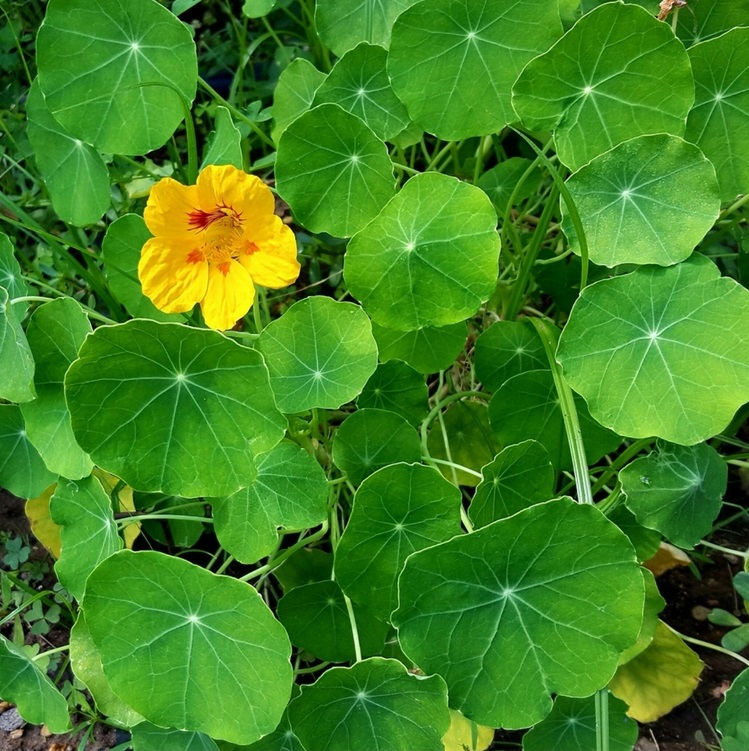Nasturtiums (Tropaeolum spp) are a genus that has about 80 species. All are native to South and Central America. The most familiar to gardeners is an annual hybrid of T. majus, T. minus and T. peltophorum, with its round, shield-like leaves and orange, yellow, red or cream flowers. Some cultivars grow in bush form while others trail over the edges of containers or even other plants.
Both the foliage and the flowers are edible, usually eaten raw in salads but can also be used in stir fries. The taste is peppery. Unripened seeds, dropped into vinegar, are used as a substitute for capers.
Planted in vegetable gardens, nasturtiums are a magnet for predatory insects that eat the insects that destroy crops. The plants can also act as a trap crop attracting aphids, flea beetles, cucumber beetles and squash vine borers away from your other crops.
Nasturtiums want full sun and poor soil. Richer soil results in lots of foliage but few flowers. Be careful not to over water. The plants prefer to be dry.
Growing nasturtiums from seed is easy. The seeds themselves are large, about the size of chickpeas. Thanks to their large size and quick germination, they are the perfect flower for children to plant. The seeds can take up to 2 weeks to germinate but you can speed that up by first nicking the hard seed coat, being careful not to injure the embryo inside and then soaking the seeds in water over night before planting. My personal experience is that soaking alone is sufficient to soften the seed coats enough for germination. Prepared in this manner, germination should occur in 1 week.
You can start your seeds either indoors or direct sow them into your garden in the spring after your last frost. Start them indoors four to six weeks before your last frost date. Plant the seeds ½-inch to 1 inch deep. Keep the soil at a 70⁰F constant temperature. A heat mat will help.
Outdoors, plant the seeds at the same depth about three inches apart. Thin the resulting seedlings to 8 to 10 inches apart. Plants grown in flower boxes or containers may need to be lightly pruned throughout the growing season. Once they start blooming, be sure to deadhead them (remove spent flowers) to keep them flowering throughout the summer and into the fall. In the fall, you might want to allow the flowers to go to seed so you save them for planting in the spring. Collect the seeds when they harden and turn a tan color. Store them in a paper bag or envelope in a cool dry place.

